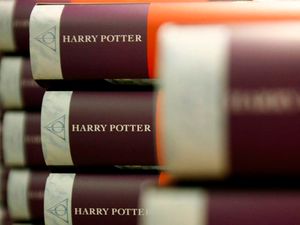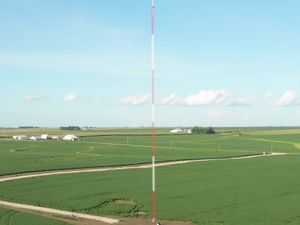5 species whose fantastic names were inspired by Harry Potter books
Does Ampulex dementor sound familiar?

It’s been 20 years since the Harry Potter And The Philosopher’s Stone made its first appearance in the book shops and enchanted us with the story of a bespectacled boy wizard and his faithful friends.
JK Rowling’s seven-book series cast a spell on popular culture for two decades and even found its way into new scientific discoveries.
Here are a few species that get their name from Rowling’s fantasy world.
1. Harryplax severus – crab

The crab, dubbed Harryplax severus, can be found roaming among dead coral fragments along the coast of Guam in the western Pacific Ocean.
The species was actually discovered by Harry Conley – an ex-Marine-turned-researcher who found the first specimen in 1998, but his discovery was only recognised in 2015 – 15 years after his death.
The tiny crab has small eyes and pale skin – as it spends most of its time in darkness. It measures less than a centimetre in both length and width and can be found hidden amongst coral rubble or under sub-tidal rocks.
2. Eriovixia Gryffindori – spider
December 10, 2016— Javed Ahmed (@curiocritters)
A piece of Rowling’s wizarding world coming to life is nothing short of magical, but the spider species discovered by scientists in India in 2016 is truly a fantastic beast.
The tiny arachnid, which is just 7mm long, was nicknamed the “sorting hat” spider due to its uncanny resemblance to the hat used to sort students into houses at Hogwarts School of Witchcraft and Wizardry.
The scientists named the spider in Latin the Eriovixia gryffindori – in homage to the hat’s owner Godric Gryffindor.
The spider uses the shape of its abdomen to blend in with dried foliage, in order to hide from predators.
3. Ampulex dementor – wasp

Named after the terrifying Dementors – who leave their victims in zombie states after feeding on their souls – this wasp injects its prey with a deadly dose of neurotoxins that causes them to become submissive.
Doing this allows the wasp to drag its prey easily and feed off its carcass at leisure. Luckily for us, this wasp, which is found in Thailand, only likes cockroaches.
The Ampulex dementor got its apt name after visitors to Berlin’s Natural History Museum were asked to vote on what they felt it should be called.
4. Dracorex Hogwartsia – dinosaur fossil

The dinosaur fossil, which was first discovered in 2004 and donated to the Children’s Museum of Indianapolis for study, is made up of a nearly complete skull as well as four cervical vertebrae.
Although the reconstructed image makes the species – believed to be from the Late Cretaceous of North America – look like a dragon, it wasn’t as fearsome as the magical creature inhabiting the world of Harry Potter. In fact, the Dracorex didn’t even eat meat.
Rowling herself approved of the name, saying: “I am absolutely thrilled to think that Hogwarts has made a small (claw?) mark upon the fascinating world of dinosaurs. My credibility has soared within my science-loving family.”
5. Clevosaurus sectumsemper – lizard fossil

Catherine Klein The 205-million-year-old reptile fossil, dubbed Clevosaurus sectumsemper, was identified by University of Bristol student in 2015.
Potter fans will be familiar with sectumsempra – a spell invented by Snape and used by Harry to attack his enemy Draco Malfoy in the sixth book, Harry Potter And The Half Blood Prince.
Klein, who undertook the research as part of a summer project, said: “The species name sectumsemper means ‘always cut’, and was chosen to reflect this. It is also a nod to the Harry Potter character Severus Snape, who made a spell called sectumsempra, perhaps meaning sever forever.”





